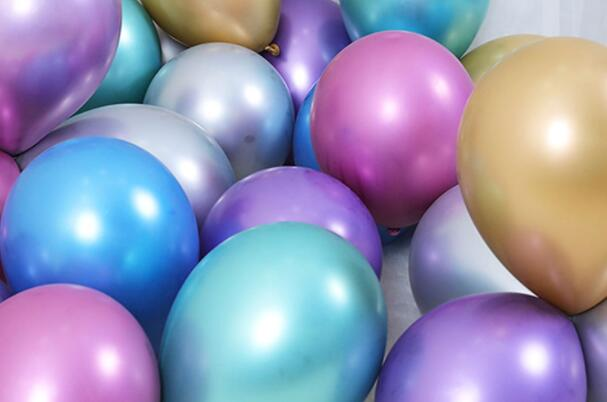Views: 0 Author: Site Editor Publish Time: 2023-07-24 Origin: Site








When it comes to parties, weddings or other fun occasions, one of the things you really need to accomplish is the presence of balloons. However, it's not just regular balloons that can hurt your cheeks when you're struggling to blow them up. We'll take you through some of the standard and helium balloons that exist for your occasion.
As you read this article, you will be moving from low quality to high quality, so I will start with standard latex balloons. These balloons are the standard "quality" balloons. They are also the ones that give you a headache and a shaky jaw for blowing up the entire package for your child's birthday party. These balloons are primarily filled with oxygen and do not float on their own, so these balloons are often used with plastic balloon sticks and cups/stands to give the illusion of floating (they also make great harmless game weapons if the right end is used for attack). However, these balloons can be inflated with helium if you wish, but since the skin is not designed for helium, they will last much less time if inflated with helium. These balloons can last 8-10 hours, which is a little longer than the average party.
This brings us to our next generation of balloons, the helium latex balloon. As the name implies, the design of the balloon makes it ideal for helium expansion. Made from a higher quality latex than standard latex balloons, they retain the air inside (in this case helium) for a much longer period of time. As a result, these balloons last much longer than standard latex balloons and have their own float. These balloons can also last 8-10 hours, so if you are deciding between standard latex or helium latex, it really depends on whether you want a floating balloon or a balloon on the end of a plastic stick.

Check out the variety of colors we have in our helium latex balloons
One balloon you may have never heard of is the Hi-Float Latex balloon. This is a term for Helium Latex Balloons, and when they are treated with a special liquid, an extra layer is added to the inside of the balloon to make it long lasting and durable. This can often be thought of as an extra layer of "latex" inside the balloon, trapping the helium inside for longer by extending the retention time of the gas. Balloons treated with Hi-Float can typically float for up to 3 weeks.
As we approached the end of the balloon spectrum, we hit on Foil Balloons, which are non-plastic balloons that often have a variety of printed designs on the front. They are usually sold in closed packages, and unless you have your own helium tank, the store will usually charge you to blow them up using the store's helium tank. These balloons may be slightly wrinkled in appearance at the seams, but they are much less likely to burst than latex balloons. They also usually last longer, 1-4 weeks, depending on size and environment. However, foil balloons can easily burst if left in the hot sun because foil skins are not stretchable like latex.
Finally, we come to the last exhibit, the plastic "bubble" balloons. These are clear, flexible plastic (as the name implies) balloons that are smooth and wrinkle-free. These balloons also come in a variety of printed designs, such as foil balloons, but they also typically have a large number of shape-centric designs. These balloons last the longest of these balloons, reaching a life span of 3-4 weeks.

Some other balloon accessories that can be helpful for your balloon adventure are balloon weights and curling ribbons. Balloon weights are tied to helium balloons to reduce their weight so they don't fly away. These can be almost any weight. If you buy them with balloons, they are usually made with nicely wrapped and decorated concrete blocks. Curling ribbons are long ribbons that are manufactured to curl over their entire length. These can be tied to balloons to create a "down" effect, or used to decorate the room around balloon weights or other accessories.
Like the beautiful and harmless balloons, they also pose some safety/environmental concerns. Most latex and some plastics are organic and therefore biodegradable, however, foil and most plastics are not and therefore are not biodegradable and need to be disposed of properly.
Now, we all know how much fun it is to inhale helium and start talking in that funny chipmunk voice, but it is best not to inhale it. There are many health problems with this, the least of which is throat damage, but there are more serious problems. The baseline is not to inhale any helium at all, and never directly from the helium tank.
Now, with a solid knowledge of balloons, you can go out and create the best atmosphere for your fun occasion. Remember not to inhale any helium, I know it's tempting and adds a whole 10 minutes of laughter on the floor during your event, but it's really not worth the risk. Other than that, good luck with your balloon mission and have fun!
| | No. 168, Zan West Street, Zangang Town, Xiong County, Baoding, Hebei, China |
| | +86-134 7342 5120 |
| | aloballoon@fantastic-ocean.com |